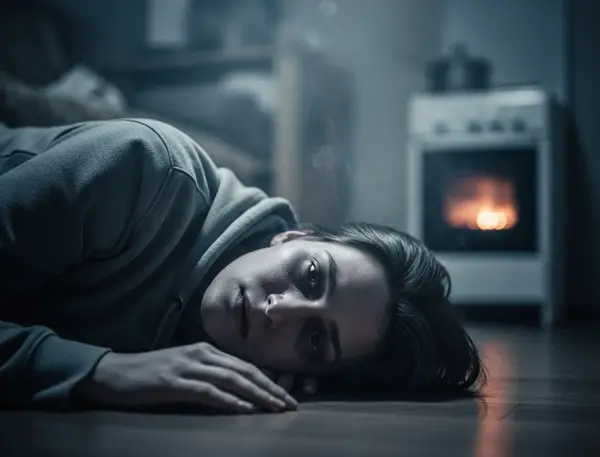Carbon monoxide is deemed a deadly gas that is colorless, odorless, and tasteless. This gas is the by-product of any partial combustion, i.e., when there is insufficient oxygen surrounding the fuel-burning appliances, carbon monoxide is bound to be produced.
You probably may not be aware, but portable generators, gas stoves, chimneys, furnaces, gasoline engines, water heaters, space heaters, heat pumps/ heat exchangers, or car exhaust are some of the potential sources of carbon monoxide emissions in and around your home.
Since it is slightly lighter compared to air in a short time, it spreads all through the whole house.
The rate of dissipation for Carbon Monoxide varies depending on the severity of the leakage, and you should stay away from that place for a good number of hours or even days if the situation demands it.
How Long for Carbon Monoxide to Dissipate?
Carbon monoxide (CO) is a colorless, odorless gas that can be dangerous, especially in enclosed spaces. A common question is whether carbon monoxide will go off by itself. The answer depends largely on how well-ventilated the area is.
In a well-ventilated space—where windows are open, fans are running, or there is good airflow—carbon monoxide can dissipate relatively quickly. Typically, in such conditions, low levels of CO may go off within 1 to 4 hours.
However, if the levels are high or if the area is poorly ventilated, it may take much longer—anywhere from 6 to 24 hours or more—for the gas to completely clear out.
People also ask how long carbon monoxide takes to go off or how quickly it goes outside.
Outdoors, carbon monoxide dissipates very quickly due to the abundance of fresh air and natural air movement, usually within minutes. This is why being outside is considered safe during a CO leak indoors. Inside the home, though, CO can linger if the source is still active or if windows and doors are shut.
In these cases, using exhaust fans or air purifiers with activated carbon filters can speed up the process, sometimes reducing levels in as little as 1 to 2 hours.
So, does carbon monoxide dissipate outside? Yes—CO naturally disperses into the atmosphere quickly when outdoors. But indoors, how quickly carbon monoxide goes off depends on factors like ventilation, airflow, and whether the source of the leak has been addressed.
It’s important to note that while the gas may clear from the air, CO can still remain in a person’s bloodstream for several hours. Therefore, if you’ve been exposed, it’s crucial to seek fresh air and medical attention immediately.
How Does Carbon Monoxide Affect Your Health?
Higher concentrations of carbon monoxide (CO) in your home can have serious effects on health due to its ability to interfere with the body’s ability to carry oxygen.
However, the severity depends on both the concentration and duration of exposure.
If left for long, CO gas in general binds to hemoglobin in the blood more effectively than oxygen, forming carboxyhemoglobin, which reduces the amount of oxygen that reaches vital organs (lungs, heart, and brain) and tissues.
Steps to be taken in case of carbon monoxide poisoning include the following…
- The affected person should leave the room and inhale fresh air.
- He/she should get medical treatment, dependent on the quantum of carbon monoxide mixed in the bloodstream, besides the patient’s assessment.
- In normal circumstances, oxygen will be administered. In cases of severity, treatment using oxygen/ hyperbaric chambers, such as a pressurized oxygen chamber, will be required.
- It is advisable to have the related appliances inspected for carbon monoxide leaks and not to go back into the building until it turns out to be safe.

7 Tips to Avoid Carbon Monoxide Emissions in Home
Carbon monoxide (CO) is sneaky. Often called the “silent killer,” this gas doesn’t knock before entering. But the good news? You can kick it out before it even gets in.
Here’s how to outsmart CO and keep your home safe and sound:
1. Detectors: Your CO Snitch
Install carbon monoxide detectors on every level of your home, especially near bedrooms. Think of them as nosy little devices that scream when trouble shows up. Just make sure they’re always awake—test them monthly and change batteries before they get cranky.
2. Vent Like a Pro—Or Risk a Gas Trap
If your gas appliances can’t breathe, neither can you. Ensure that stoves, fireplaces, water heaters, and furnaces are properly vented outside. A blocked vent is like putting a lid on boiling trouble—pressure builds, and CO creeps in. Don’t give it the chance.
3. Schedule Annual Checkups for Peace of Mind
Your heater and chimney deserve a little TLC. Book a yearly check-up with a licensed technician—because even your water heater has secrets it shouldn’t keep. Regular maintenance keeps everything running smoothly and safely.
4. Don’t Cook Up Trouble—Use Appliances Right
Tempted to heat the house with your gas oven? Don’t. It’s not a fireplace. And that portable BBQ grill? It belongs outdoors, not in your living room. Only use appliances for their intended job. Improvisation is great in art, not in home heating.
5. Generators: Great Outside, Deadly Indoors
Running a generator indoors—even in your garage with the door open—is like inviting CO to dinner. Generators need wide open spaces to operate safely. Keep them far away from doors, windows, or vents. Fresh air for the win!
6. Your Car’s Not a Lounge—Move It or Mute It
Leaving your car idling in a garage? Big no-no. Even with the door open, fumes can sneak into your home faster than you think. Start your car outside the garage and roll out. It’s better for your health—and your lungs.
7. Snow and Tailpipes Don’t Mix
Winter tip: always check your car’s exhaust pipe before starting the engine. A snow-blocked tailpipe is like CO’s secret tunnel into your cabin. Clear it out and let your car breathe freely (and you too).
Bottom line
Carbon monoxide may be invisible, but its danger is very real. How long it takes to dissipate depends on ventilation, airflow, and whether the source has been removed—but in a well-ventilated space, it can take a few hours.
However, without proper ventilation, CO can linger dangerously longer. It won’t just “go off by itself” instantly. That’s why it’s crucial to act fast—shut off the source, ventilate thoroughly, and leave the area if needed.
And remember, CO doesn’t knock. But if you follow these 7 steps, it won’t stand a chance of getting in. A little awareness goes a long way—so be smarter than the gas. Your home will thank you.
Meen Smith is a nurse by profession who loves writing online, spending time with her family and caring for the elderly. She has already worked as an associate editor on various moms, babies, home appliances, kitchen, and healthy living blogs. In her spare time, she also enjoys drawing, reading/writing kindle eBooks and improving her skills a bit.

